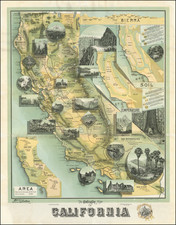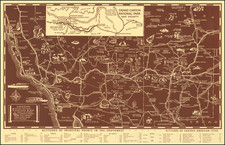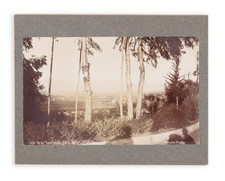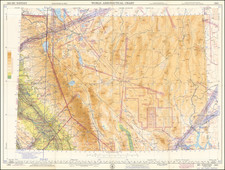Extremely rare first edition of the US Coast Survey's map of the City of San Francisco and Environs.
The 1857 edition of the Coast Survey map of San Francisco marked a significant improvement in the USCS's mapping of San Francisco. Prepared by A.F. Rogers, it captured the tremendous growth of the City, locating wharves,, streets, buildings, roads, topographical features and places such as the Union Race Course and PIoneer Race Course west of the City. The map marked a significant move forward in the scientific mapping of the City and would be revised again later in 1857 to include soundings in the harbor and other offshore details.
While first issued and corrected in 1857, the map was not included in any of the annual reports until a revised edition, dated 1859, was issued. As noted by Rumsey, the chart was "First issued in 1857, with another edition issued later in 1857 that differs from the earlier 1857 edition and is apparently the same as this 1859 edition (Vogdes). " The first edition does not include soundings, has a shorter "note" in the top right corner, and does not include the "Blossom Rock Buoy" which appears below the table. It also does not include the "hydrography by Lieut. R.M. Cuyler," which was added to the later editions.
This first edition is of the utmost rarity. Neither of the 1857 editions was never published in the regular annual Coast Survey reports. We have been unable to locate another example either of the 1857 editions being offered for sale in AMPR or at auction. Not in Rumsey or AMPR.
OCLC locates only 3 copies of this1857 edition at the San Francisco National Maritime Museum, University of Wisconsin, Milwaukee (ex-US Geographical Society copy) and the British Library.
The United States Office of the Coast Survey began in 1807, when Thomas Jefferson founded the Survey of the Coast. However, the fledgling office was plagued by the War of 1812 and disagreements over whether it should be civilian or military controlled. The entity was re-founded in 1832 with Ferdinand Rudolph Hassler as its superintendent. Although a civilian agency, many military officers served the office; army officers tended to perform the topographic surveys, while naval officers conducted the hydrographic work.
The Survey’s history was greatly affected by larger events in American history. During the Civil War, while the agency was led by Alexander Dallas Bache (Benjamin Franklin’s grandson), the Survey provided the Union army with charts. Survey personnel accompanied blockading squadrons in the field, making new charts in the process.
After the Civil War, as the country was settled, the Coast Survey sent parties to make new maps, employing scientists and naturalists like John Muir and Louis Agassiz in the process. By 1926, the Survey expanded their purview further to include aeronautical charts. During the Great Depression, the Coast Survey employed over 10,000 people and in the Second World War the office oversaw the production of 100 million maps for the Allies. Since 1970, the Coastal and Geodetic Survey has formed part of the National Oceanic and Atmospheric Administration (NOAA) and it is still producing navigational products and services today.









![[Southern California and Southern Nevada] Asher & Adams' California & Nevada, South Portion](https://storage.googleapis.com/raremaps/img/small/92086.jpg)
![[ Republic of Texas ] Central America II. Including Texas, California and the Northern States of Mexico](https://storage.googleapis.com/raremaps/img/small/93534.jpg)



